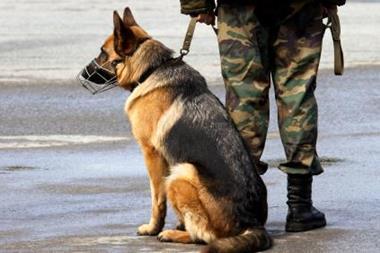Poor crisis management can have a significant negative impact on your corporate reputation and investor confidence. Fiona Warin discusses communications strategies for damage limitation and the role of public relations.
Industrial companies have long had crisis plans in case of fire or environmental disaster. In the City, crisis preparation has focused on terrorist activity, power failure or IT systems meltdown. But crises are just as likely to arise from misuse of an executive expense account, a sexual harassment lawsuit, or even inappropriate use of the company e-mail system.
It is almost impossible to predict the exact nature of a crisis, so many crisis plans are generalised documents, identifying the core team, the spokesperson and key telephone numbers. But, while crisis planning deals with the reality of a situation, crisis communications deals with the perception. This is what leaves the lasting impression.
PR agencies and crisis communications professionals can assist in two ways. First, proactive pre-crisis planning can help to identify and analyse corporate risk. Plans can be drawn up and tested. Key people can be trained to speak to and deal with media and investor audiences. Second, once a crisis is emerging, a PR agency can help put a pre-existing plan into action or, if there isn't one, objectively analyse the situation and quickly implement a tried and tested model of crisis management.
An agency can become an extension of your press office. Staff can field calls, answer questions and identify and prioritise the most influential journalists for management to speak to.
Agencies also have the manpower to monitor all the media, tracking the issues and responding to the crisis as it unfolds. Larger agencies do this on a regional, national and international basis. More importantly, they can draw on their contacts throughout the industry to target key influencers. Sound relationships with journalists and investors are built over time. Good agencies have done this, so if your contacts are rather tentative then use theirs.
Confusing or conflicting messages can have a very negative impact. One of the first steps is to identify the core message and to brief the key spokesperson. The core message should have context in the interests of the stakeholders, including employees, management, customers, suppliers and capital providers.
Significant shareholders will appreciate prompt one-onone contact. A loss of investor confidence can lead to a falling share price, with consequences ranging from low employee morale to total business failure.
Getting it right
Honesty and a timely response are the central tenets of crisis communication, and one of the biggest mistakes is to close the lines of communication, according to Stuart Smith, director of corporate communications at Edelman PR Worldwide. "Companies sometimes think it is preferable to wait until full investigations have been carried out before making statements. However, far from being seen as a prudent and sensible option, this is usually perceived as aloof arrogance." Moreover, lack of information can be a licence to speculate. You cannot guarantee that a journalist will print what you say - but it is a less risky proposition than leaving him to make it up.
Perception is all important in a crisis. It is not so much what you are doing, as what you are seen and known to be doing. How does it look, for example, if the CEO is out playing golf or the management team is having a party, as redundancy notices are posted?
Resignation of the chief executive is unfortunately a common tactic of "last resort". The removal of the person in charge is a symbol that things are going to change. It can help buy time. It can also leave a leadership vacuum. It is no substitute for ongoing communications.
Corporations used to develop distinct messages for each audience. The new technologies of communication have rendered this policy obsolete. You have to work on the assumption that every message is ubiauitous.
Who are your allies?
A good reputation and solid media relations constitute an insurance policy. An organisation that communicates openly and frequently with its stakeholders will have a stockpile of goodwill and loyalty that can help to buy time. Journalists and investors are more willing to give the benefit of the doubt or await clarification. This does not last indefinitely, however, as companies such as Marks & Spencer have been finding out.
It is also worth noting that the media, sell-side analysts, industry analysts and the like are independent of the company. Their opinion is likely to have enhanced credibility with your immediate stakeholder groups. You need to ask yourself who your stakeholders are, who they are likely to listen to, whose opinion they respect. A call from the investigative television programme "Watchdog" is not necessarily a reason to panic. It is an opportunity to demonstrate corporate ethics and actions to a wide aii~ipnrp
Companies and large organisations have personalities - a corporate image which has developed over time either haphazardly or with careful nurturing. Corporate reputation impacts on people's decisions about where they work, who they do business with, who they endorse, what they invest in, what they write. A crisis is defined as a turning noint or a time of danger. It is also a time of opportunity. The way that a company handles a crisis makes an impact on the collective memory of its stakeholders and affects its reputation long into the future.
--
Fiona Warin is an account director, Edelman PR Worldwide, Tel: 020 7344 1599, e-mail; fwarin®edeluk.com
Planning for emergencies
The old adage that "to fail to plan is a plan to fail" still stands, warns Richard Bloomfield. Identifying the Achilles heel in your business's international as well as domestic operations is essential.
A crisis could result in loss of life, serious damage, business disruption, loss of crucial resources or long term access denial, depending on the nature of your business. You need to measure the potential short term and long term effects. And, since a crisis may involve offsite emergency services, your in-house plans must integrate with theirs.
If you are operating internationally, the difficulties multiply. Each unit or site has its own management and day to day operating structure. They may operate in a similar way, yet be situated in differing national environments. Essential services may vary considerably in terms of organisational structure, efficiency and the roles and responsibilities of individuals. For example, when the Herald of Free Enterprise sank at Zeebrugge, the British authorities did not immediately realise that operational responsibility in Belgium rested with the local mayor. They lost valuable time in setting up the managing structure and communications.
While you can provide each site or asset with generic directives or formats for contingency planning, in reality, final plans will vary from site to site. However, it is important to enforce common objectives. A three tier management system can help you plan your response to an international crisis.
At the strategic level, policy is created, generally by the head of the company.
The tactical level translates policy into tactics, co-ordinating all company resources from this point. The operating base for this function can be remote if communications are adequate. There can be more than one co-ordinator if the size of the problem is too diverse or too large for one individual. Those involved at this level should keep the strategic level aware of developments.
The unit level represents the managers or operatives who actually carry out the tasks set at the tactical level.
This system is flexible and can be overlaid to fit most if not all scenarios. The UK emergency services have used it for over ten years, where it is known as the GoldSilver-Bronze management system. Many organisations are now adopting it as a crisis management method.--
Richard Bioomfwld is a crisis and emergency planning consultant with BELFOR.Ttel: 01235 1862500, email: info@ukbelfor.com .
Best practice crisis communications



















